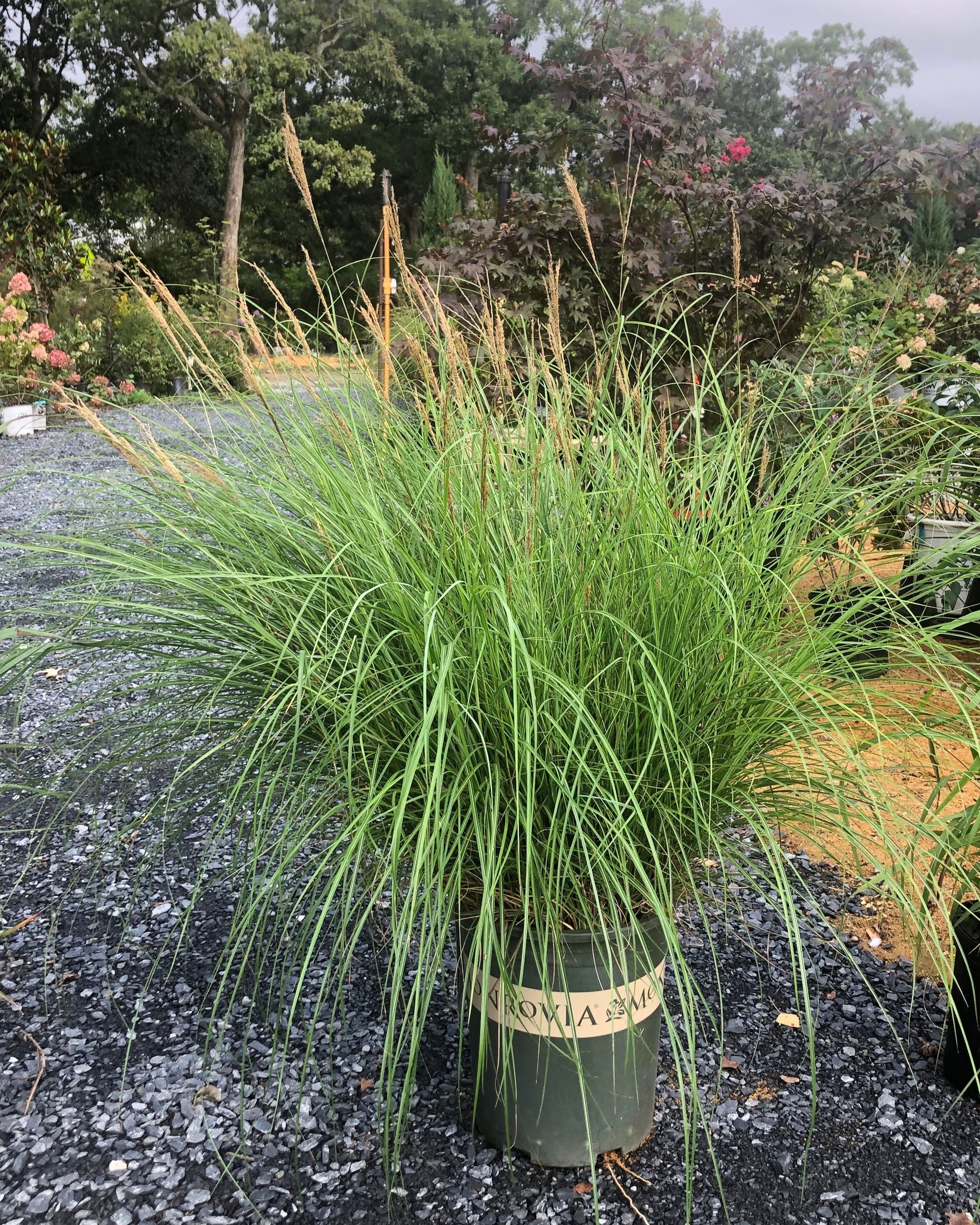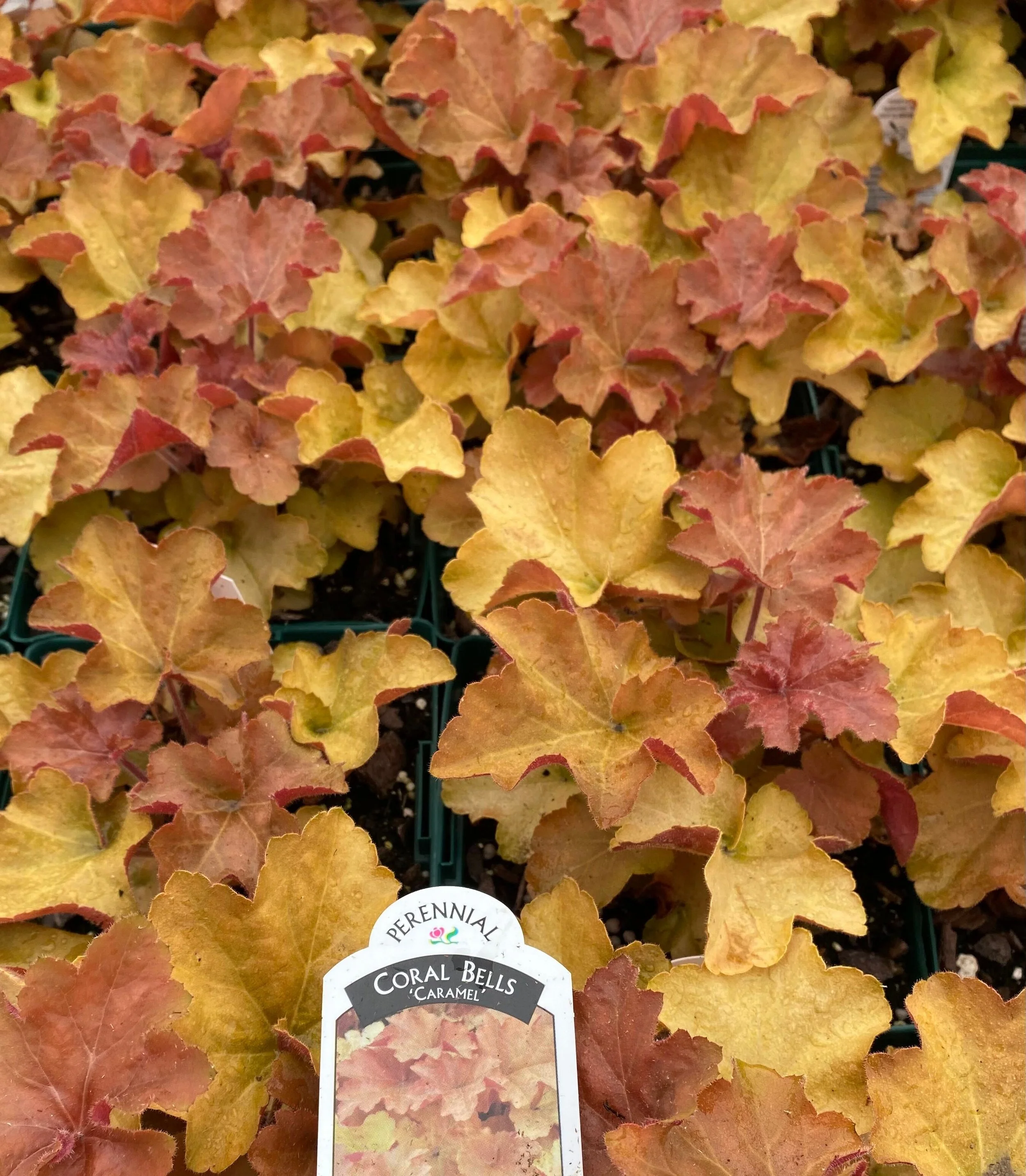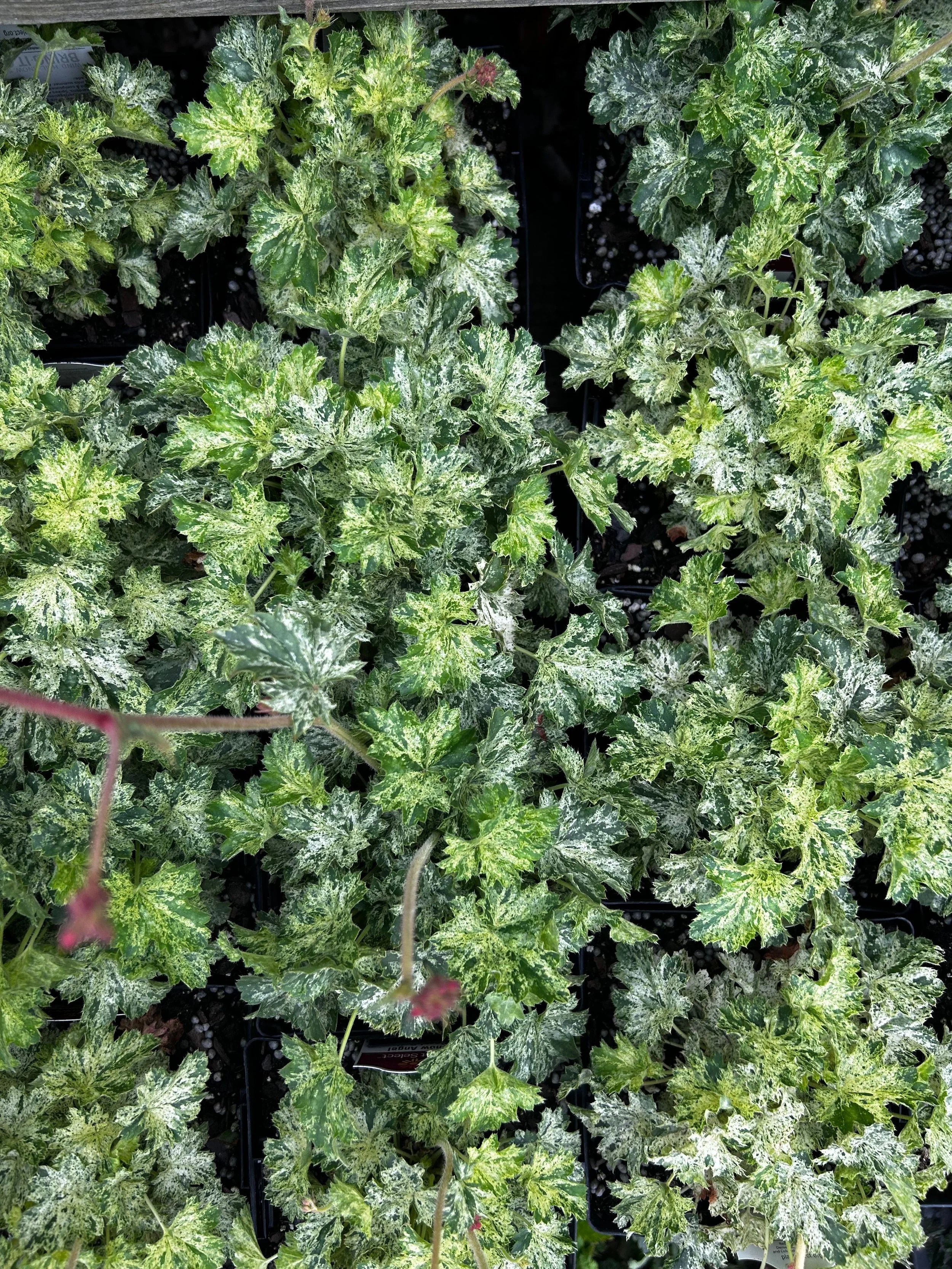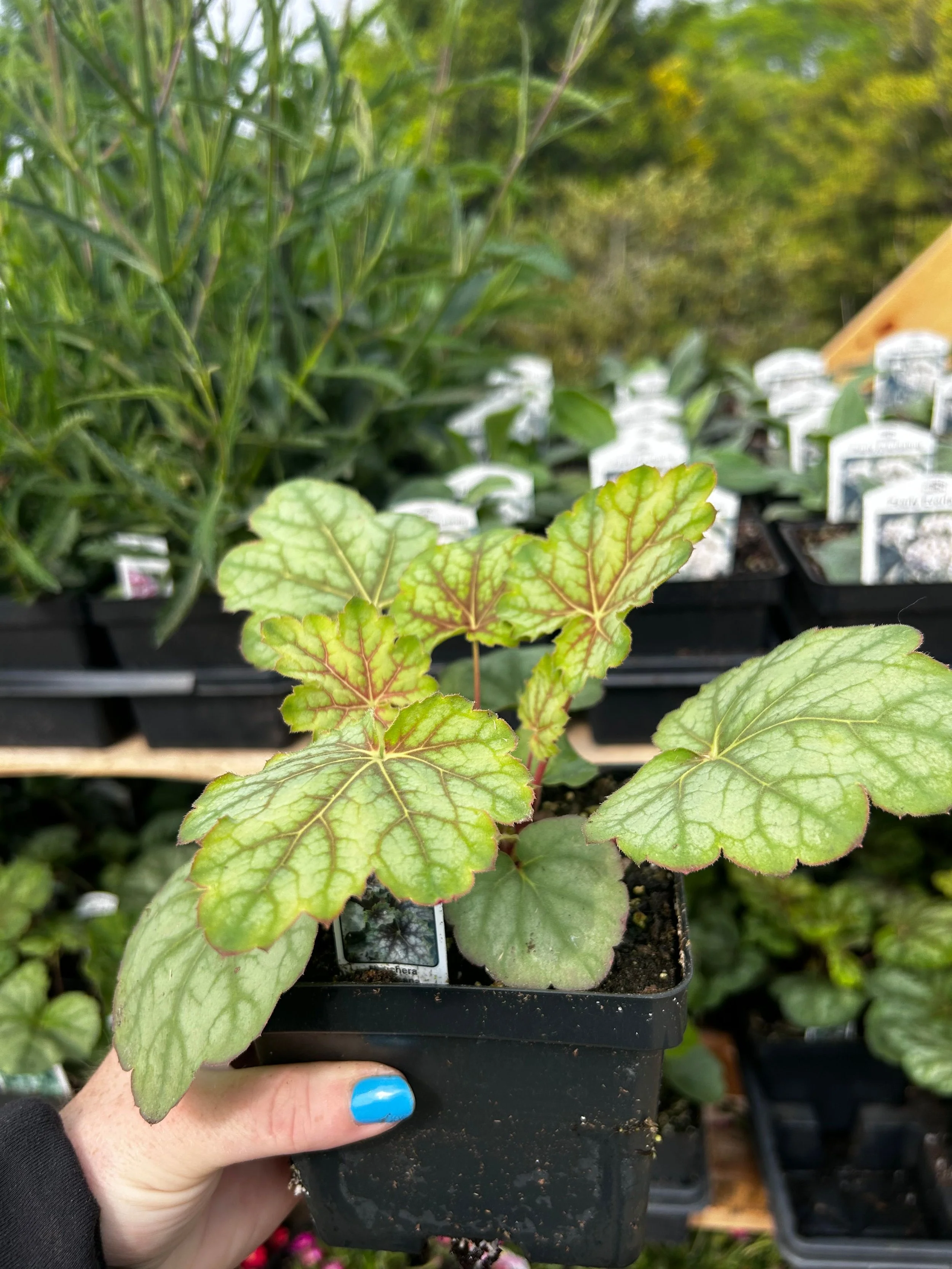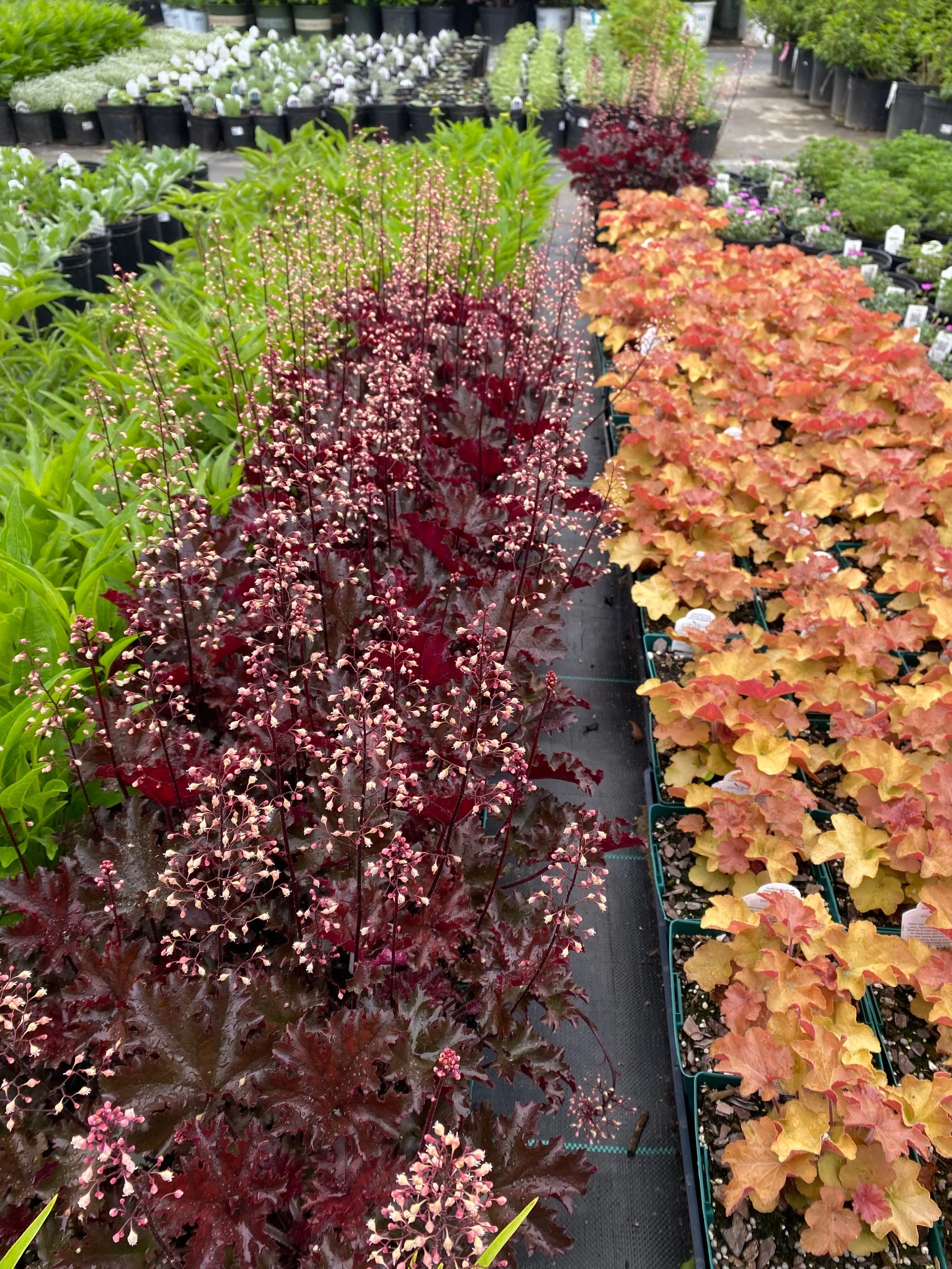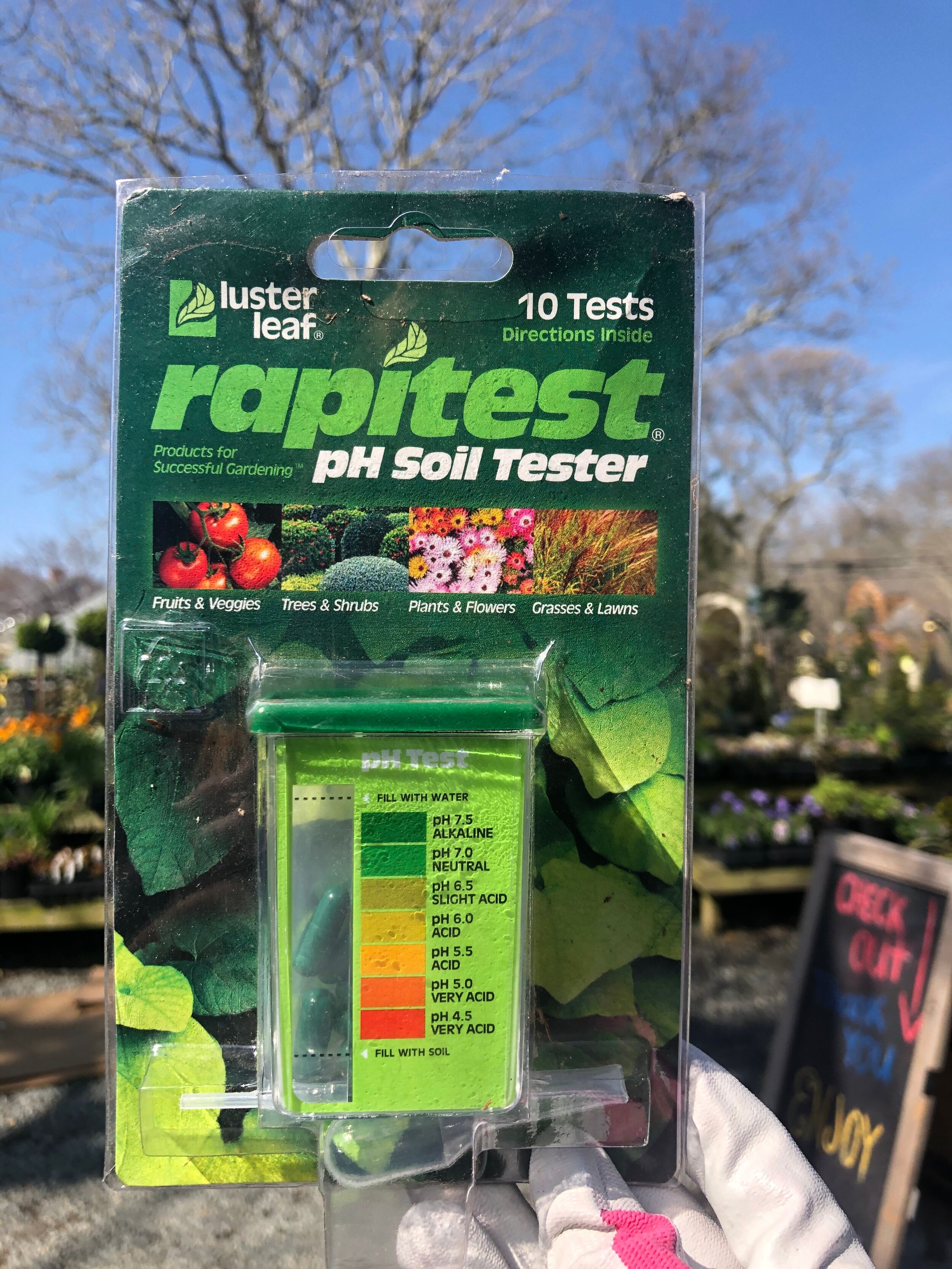GRASSES FOR FALL COLOR
30% OFF
Ornamental Grasses have been very popular for decades. They serve many purposes from adding backdrops, texture or a natural feeling to a landscape and are often used in restoration projects. Most of them fare best in full hot sun, are drought tolerant and do not need rich soil. Typically, there is no maintenance once established.
ORNAMENTAL GRASSES WE CARRY:
For years we have carried many cultivars of miscanthus, panicum & Pennisetum
*****************************************
MISCANTHUS
Miscanthus sinensis (Maiden Grass): Miscanthus sinensis is the genus and species. Cosmopolitan, Morning light, Gracillimus, Adagio and Purpurescens are all cultivars of Miscanthus sinensis. We have a wonderful selection of Miscanthus. It is a low maintenance, deer resistant, ornamental grass commonly planted in groups along a border, for privacy screening, along edges of beds and are excellent for container planting. It has silvery-green foliage that turns golden-bronze in autumn and has spectacular plumes in late summer. The plumes on the Miscanthus dry beautifully for winter bouquets or effect in the late fall, early winter landscape. Late winter, with snow and rain pounding, it starts to fall apart. Maiden Grass thrives in full sun and may get 6 feet wide with a 10 foot spread.
Miscanthus sinensis 'Morning Light' : Dense clusters of slender, green and white blades. Reddish tint on blades throughout winter. Great texture for beds and borders.
Miscanthus sinensis 'Cosmopolitan' : Wide green and white strap like leaves with showy feathery plumes. In bloom, Cosmopolitan can get 8-10ft tall when it’s happy. It is upright and the foliage may appear a little pendulous when it’s in bloom because the plumes are so straight and tall. Full sun to light shade. Highly salt tolerant and prefers moist to well drained soils.
Miscanthus sinensis 'Variegatus' : Beautiful, wide cream and green striped foliage. Grows to 5ft by mid-September with red-tinted blooms. Best in full sun. Great as a screen, backdrop or border plant.
Miscanthus sinensis ‘Gracillimus’: Upright structure with all green, narrow, finer foliage. When in bloom reaches 6 -8ft tall.
Miscanthus sinensis ‘Adagio’: A dwarf maiden grass that reaches 3 - 4ft tall.
Miscanthus sinensis ‘Purpurescens’: Turns flaming red in late fall and is really the only one to have good fall color.
Miscanthus s. Gracillimus
Miscanthus s. Gracillimus
Miscanthus zebrinus
Miscanthus Morning Light
Miscanthus Scrictus
Miscanthus Adagio
*****************************************
PANICUM
Panicum virgatum (Switch Grass): Easily grown in average, medium to wet soils in full sun to part shade. A clump-forming, warm season grass which typically grows 3' -6' tall. Bright green leaves occur up and down the stem, turning bright yellow in fall. Flowers in mid-summer with finely-textured, pink-tinged, branched panicles. The seed plumes stay through winter and are a good food source for birds.
Panicum virgatum 'Cloud Nine' (Switchgrass)
One of the tallest varieties. Large rose colored seed panicles envelop the upright bluish foliage. Seed panicles turn golden shades in fall. Ideal wildlife habitat providing shelter and food for songbirds.Panicum virgatum 'Shenandoah' (Red Switchgrass)
Upright foliage becomes red tinted during the growing season, culminating in a dazzling red-leaved show in fall. Drought tolerant and easy to maintain.Panicum virgatum 'Heavy Metal' (Blue Switchgrass)
Upright habit with metallic blue foliage. Pink-tinted, airy blooms appear in July, highlighting the color of its blue leaves. Great planted in masses.
Panicum virgatum ‘Shenandoah’
Panicum Dewey Blue
Panicum
*****************************************
PENNISETUM
Pennisetum alopecuroides (Fountain Grass): A beautiful addition to your garden with its cascading foliage and nonstop drama. Pennisetum has finely textured foliage and an elegant form. Flowers in late summer, with showy white, pink, copper or black, bottle brush shaped spikes. In autumn the leaves turn orange-bronze. The leaves and flower spikes sway in the breeze adding movement to the landscape. The plumes make fabulous cut flowers. Fountain grass is easily grown in most soils and does best in full sun.
Pennisetum alopecuroides 'Hameln'
Features deep green leaves in summer changing to golden yellow in fall and fading to beige in late fall. Showy, silvery to pinkish-white, bristly, bottle brush-like flower spikes arch outward from the clump in late summer. Form 2-3' tall and wide compact clumps .Pennisetum alopecuroides 'Moudry'
Black fountain grass. 'Moudry' provides excellent texture, color and contrast to borders, foundations and open areas. It is most noted for its distinctive black flower spikes. Grows 2-3' tall and wide. The plumes are great cut flowers.
Pennisetum Hameln
Pennisetum Hameln
Pennisetum Hameln
Pennisetum Moudry: Black fountain grass blooms in late summer.
*****************************************
We ALSO carry a variety of cultivars and species in addition to our long standing grasses:
Calamagrostis acutiflora (Feather Reed Grass): For years we only carried Karl Foerster, now we carry a variety of Feather Reed Grasses
Karl Foerster Feather Reed Grass
'Overdam' Feather Reed Grass
Calamagrostis brachytricha (Korean Feather Reed Grass): Another very beautiful species of Feather Reed Grass
Phalaris arundinacea (Ribbon grass)
We especially like the cultivar Strawberries and Cream for its pink tones on the foliage.
Carex: This is actually a sedge and not a grass but grasses, sedges and rushes have always been grouped together and we will continue this tradition. We carry several cultivars of Carex.
Carex ‘Ice Dance” (Japanese Sedge): Chuck’s favorite
Carex plantaginea: Andrew loves this cultivar
Carex comans ‘Bronze’: Chris loves this cultivar with its reddish hues in fall.
Carex buchananii 'Red Rooster': Chris also loves Red Rooster which is tall and upright.
Chasmanthium latifolius (Northern Sea Oats): Has the prettiest seed pod.
Hackonechloa grasses: They will take some shade and appear weeping with their pendulous habit.
Hackonechloa macra (Hakone Grass): Green tones
Hackonechloa macra ‘All Gold’: Yellow tones
Hackonechloa macra ‘Aureola’: Variegated.
Schitzachyrium scoparium (Little Blue Stem Grass): Honored with the perennial plant of the year award for 2022. ‘The Blues’ is a popular old cultivar and there are many new cultivars. All of them remain true to Little Bluestem’s legacy of drought tolerance, low maintenance and natural beauty. We see Little Bluestem as one of the hottest grasses in the trade. It brings high ecological value and a fresh look to modern landscapes. Many years ago Schitzachyrium was grouped together with Andropogon. It was determined to be different enough to make it its own genus.
Schitzachyrium scoparium ‘The Blues’
Schitzachyrium scoparium ‘Standing Ovation’
Schitzachyrium scoparium ‘Blue Heaven’
Andropogon gerardii (Big Bluestem): We carry several Andropogon.
Andropogon gerardii ‘Blackhawks’: A dark foliage cultivar called Blackhawks is a favorite.
Sporobolis heterolepis (Prairie Dropseed): A native grass often used in restoration projects.
Sesleria autumnalis (Autumn Moor Grass): Sesleria is a European native often used in America as a ground cover. Sesleria autumnalis received the Royal Horticultural Society Award of Garden Merit.
Festuca glauca and Helictotrichon sempervirens: We carry these grasses for their glaucous foliage. They are great along the border or in containers and like all grasses are low maintenance and drought tolerant once established.
Ophiopogons
Ophiopogon planiscapus 'Nigrescens' (Black Mondo) A black grass
Ophiopogon japonicus (Dwarf Mondo Grass) A dwarf version
Bouteloua gracilis: Our newest grass. A prairie native with unusual seed heads.
*****************************************
Schyzachyrium ‘The Blues’
Schizachyrium ‘Blue Paradise’
Karl Foerster
Carex Red Rooster in ornamental planters
*****************************************
We also carry a few ornamental grasses that will not overwinter In our zone 7 island.
Muhlenbergia capillaris touts to be Hardy to zone 5 but it will not overwinter for us. The pink plumes in the late afternoon are the prettiest thing you’ll ever see. We keep on trying it because it should be hardy!
Pennisetum Rubrum & Pennisetum Fireworks: Both have wonderful foliage color and are fabulous as ‘thrillers’ in pots.
Pennisetum Purple Majesty & Pennisetum Prince: We highlight these in the fall because they have a great fall effect with dark foliage and large plumes. However, they will not survive the island winters.
*****************************************
Carex ‘Prairie Fire’
Pennisetum Rubrum


